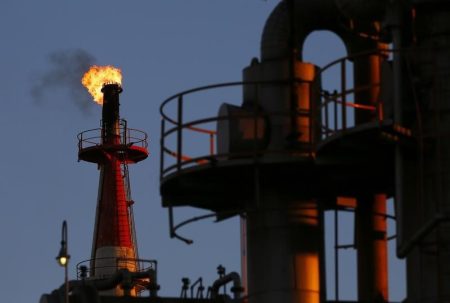Investing.com – Crude prices tacked on another 1% of gains Wednesday as market participants awaited the release of U.S. petroleum inventory data to support oil’s renewed rally over the past fortnight.
London-traded settled at $90.60 per barrel, up 56 cents, or 0.6%, on the day. In Tuesday’s session, Brent peaked at $91.14, its highest since August 2022. The latest two-day gain put the global crude benchmark up 1% for the week, extending last week’s 4.8% rise. Prior to that, it gained a net of 16% over nine weeks.
New York-based West Texas Intermediate, or , crude finished Wednesday’s trade at $87.54 per barrel, up 85 cents, or 1%, on the day. It hit a 10-month peak of $88.09 during the session. Week-to-date, WTI was up 2%, extending last week’s 7.2% gain. Prior to that, the U.S. crude benchmark rose a net 16% over nine weeks.
“The oil market is going to be tight for the foreseeable future, but right now energy traders need a fresh catalyst or some not-so negative demand news for the recent rally to extend,” said Ed Moya, analyst at online trading platform OANDA.
Oil’s race to $90 happened with less than three weeks left for summer, the season Americans like driving the most. With the fall season of lower oil usage set to begin on Sept 23, crude prices would typically retreat a little, sometimes meaningfully, in the world’s largest consuming country.
But that may not happen this time, not with the Saudi obsession of ultimately getting oil to $100 a barrel or beyond. The Arabs, who control much of the world’s oil exports, have been fixated on triple digit pricing since losing that advantage in August 2022, when Brent crude hovered above $105.
Key to this is the one-million-barrels-per day in additional cuts, on top of other existing production rationing, that the Saudis have been carrying out since July. By extending this till the year-end — and widening it with the help of Moscow which will cut 300,000 barrels per day of Russian production — the kingdom is hoping to create a different sort of market phenomenon for pricing.
Market participants were also on the lookout for U.S. weekly oil inventory data, due after market settlement from API, or the American Petroleum Institute.
The API will release at approximately 16:30 ET (21:30 GMT) a snapshot of closing balances on U.S. crude, gasoline and distillates for the week ended Sept. 1. The numbers serve as a precursor to official inventory data on the same due from the U.S. Energy Information Administration on Wednesday.
For last week, analysts tracked by Investing.com expect the EIA to report a drop of around 2.0 million barrels, to add to the prior week’s 10.584M barrel reduction.
(Peter Nurse and Ambar Warrick contributed to this item.)
Read the full article here















